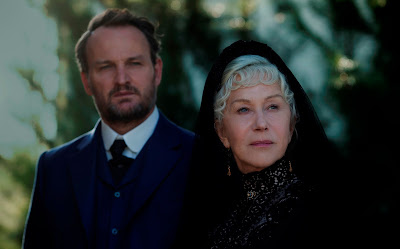Wednesday, January 27, 2021
Winchester
Wednesday, January 20, 2021
Monday, January 18, 2021
Books: Days of Thrills and Adventure
 |
| Movie serial actor Buster Crabbe |
Friday, January 15, 2021
The Two Popes
A Luso World Cinema Blogathon é um evento dedicado a filmes e cineastas em língua portuguesa de todo o mundo, organizado por Critica Retro e Spellbound by Movies. Para uma lista completa dos blogueiros participantes, visite os links nos sites de hospedagem.
Netflix viewing
One of the brightest lights in recent Brazilian cinema has been director Fernando Meirelles. The São Paulo native discovered film through his father, who made 8mm parodies with his family and friends. In college he studied architecture, but also sustained his interest in filmmaking. He entered indie TV and experimental film after graduation, which led to advertising. He co-founded the ad firm O2 Films.
In 2002, he co-directed, with Katia Lund, the movie City of God, a crime picture based in a suburb of Rio de Janeiro, based on a novel inspired by actual events. O2 Films was one of the production companies. The film was an international sensation, and was nominated for four Oscars, including Best Director and Best Adapted Screenplay.
In subsequent years, Meirelles made the Oscar-winner The Constant Gardener, as well as the films Blindness and 360 and the HBO series Joint Venture. When the Summer Olympics came to Rio in 2016, he directed the opening ceremonies. In 2019, Meirelles adapted the play The Two Popes for Netflix.
Popes loosely tells the story of the relationship between Pope Benedict XVI and the future Pope Francis, back when he was still Cardinal Jorge Mario Bergoglio, in the wake of the 2012 scandal over corruption within the Vatican. Anthony Hopkins plays the former and Jonathan Pryce plays the latter.
Meirelles recreated the Sistine Chapel in the famous Cinecitta studio in Rome. This podcast explains how he did it. St. Peter’s Square was computer-generated. Additional filming was shot in and around Rome as well as Argentina.
Pryce and Hopkins were both Oscar-nominated, for Best Actor and Best Supporting Actor, respectively. Pryce spoke some Spanish and Hopkins spoke some Italian and a little Latin. They both came across very convincingly.
I can’t say the story moved me that much, not being Catholic, but the contrast between the two holy men and their differing visions for the future of the faith was presented well. The reality behind the popes and their connection to each other is different, but this is, after all, a dramatization. The adapted screenplay by Anthony McCarten was also Oscar-nominated.
Popes is an ambitious production depicting a crucial turning point in religious history, told on a small, almost intimate scale.
———————
Previously:











